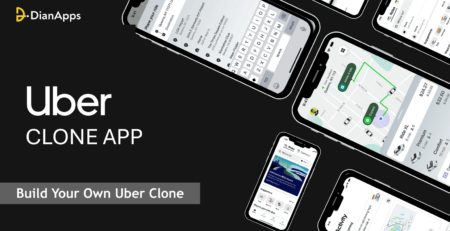Flutter 3.0: Build Apps With macOS and Linux
Can Flutter build apps on macOS and Linux? The answer is simple Yes! With the newest release of Google I/Os’ Flutter 3.0, you can now build desktop apps without the need for third-party tech-tools interference. This indeed has outraged the popularity scale of Flutter even wider. And why not? The framework is simple to use, compatible, and provides a native-like appearance to not just mobile and web apps but also desktop applications.
There have been several new modifications and some lessening of compatibility for older Windows since the latest version allowed complete Windows support for Flutter.
This article will examine the evolution of Flutter app development throughout time and the changes brought about by Flutter 3.0.
Before we head on to the latest flutter 3.0, head on to read more about how flutter can help build a desktop app alongside its examples.
Features of the newest Flutter 3.0
1. Support for Linux and macOS
Now that Flutter 3.0 is out, you may create apps for Linux, macOS, and Windows using the same code base. Due to the same Dart codebase across all platforms, this is feasible. Any target platform may execute your app once it has been created in Dart.
2. Simple iOS Releases & Refresh Rate Support
The first framework for mobile development to enable a refresh rate of more than 60 frames per second is Flutter. Applications may now run at up to 120 frames per second on phones with high-resolution displays. The iPad Pro and iPhone 13 Pro are two iOS devices that will enable variable refresh rates.Higher refresh rates contribute to an animation’s smoother performance.
As a result, it gets rid of choppiness, which is typically felt when scrolling around the device or switching between screens.
3. Mobile Support That Folds
All main platforms that Flutter supports both single-page and multi-page apps (Android, iOS, Windows, and macOS). With Flutter, you can create cross-platform applications that also look fantastic on foldable gadgets. With the aid of this new functionality, you can also resize your app to fit different screen sizes.
4. Sunsetting Migration for 32-bit iOS/iOS 9/iOS 10
Since the beginning, Flutter app development has supported 64-bit builds, but it has been constrained by Apple’s demand that apps be developed in Swift or Objective C. You can now create apps in Dart or Kotlin using Flutter 3.0, which runs on Android (which runs on iOS). Because you will have total control over the language your app employs, you no longer need to worry about developing an AppStore-ready app.
5. Support for the Cascading Menu and System Menu Bar on macOS
A Cascading Menu widget is included in the Flutter SDK, making it simple to build an app-wide menu. For a smooth transition between the app’s primary menu and secondary menu, the cascading menu combines the new popup menu with the built-in system menu bar.
The CascadingMenu widget offers the following features:
- When it is generated, the Cascading Menu is automatically positioned at the top of the screen and deleted when it is no longer required. By entering a top offset value in pixels, you may alter it.
- You may design and add many menus to the screen simultaneously, changing their order and appearance dynamically.
- Menus may be introduced dynamically, so even if they are not currently available in your program, they will still show up on the screen.
6. Toolkit for Flutter’s Games
The casual game toolkit in Flutter 3.0 is a set of widgets you may use to create games for iOS and Android. In order to make it simpler for you to create games, the game engine gives a large collection of templates, instructions, and tutorials. It also leverages the GPU to generate scenes and offers a high-performance animation system that supports physics and collision detection.
7. Dart 2.17
The largest upgrade to date for Dart is version 2.17. It now includes extensive new enum support, making it simpler to write code that employs named function Object() { [native code] } arguments. It simplifies developing code for passing parameters to superclasses and improves how named arguments are used in constructors.
8. Image decoding
Image decoding is the process of converting an image file into a format that the app can understand. An image encoder, which produces a decoded version of the picture that can be supplied to your app, is the ideal method to accomplish this.
As part of Flutter 3.0, picture decoding was included. It enables you to write less code and speeds up and improves the responsiveness of your apps.
Flutter app development company and developer leverages the built-in support for several popular picture formats in addition to enhancing image decoding efficiency. Depending on what you need the photos for, you may encode them in a variety of ways.
9. Windows 7 and 8 are being phased out for development
With this update, Windows 10 is now the preferred version for developers. Although Microsoft’s versions (Windows 7, Windows 8, and Windows 8.1) are no longer supported and only offer limited testing on these releases, Google is not preventing work on these older versions. Google urges you to update even though they will continue to provide “best effort” support for older versions.
Note that only the recommended development environment has changed; Google still provides support for Flutter app development running on Windows 7 and Windows 8 operating systems.
Want to know what flutter’s previous release had for a better comparison? Read on the blog: Flutter 2.2 announced at Google I/O
Wrapping Up
The key selling point of Flutter 3.0 is that it initially offered 6 main platforms, with MacOS and Linux being added. According to Tim Sneath, Google’s primary objective with Flutter is to make these versions of the framework a reality. This, according to him, is a significant step towards creating a solid base for Flutter to grow on.
Finally, he concedes that developers will be more effective if they can utilize all the many platforms that the Flutter app supports. Hopefully, we will see what Google has in store for us next.
In case you are willing to develop your own flutter application, get in touch with us for reliable flutter app development services today!
Also Read about: React Natives’ 0.70 release




